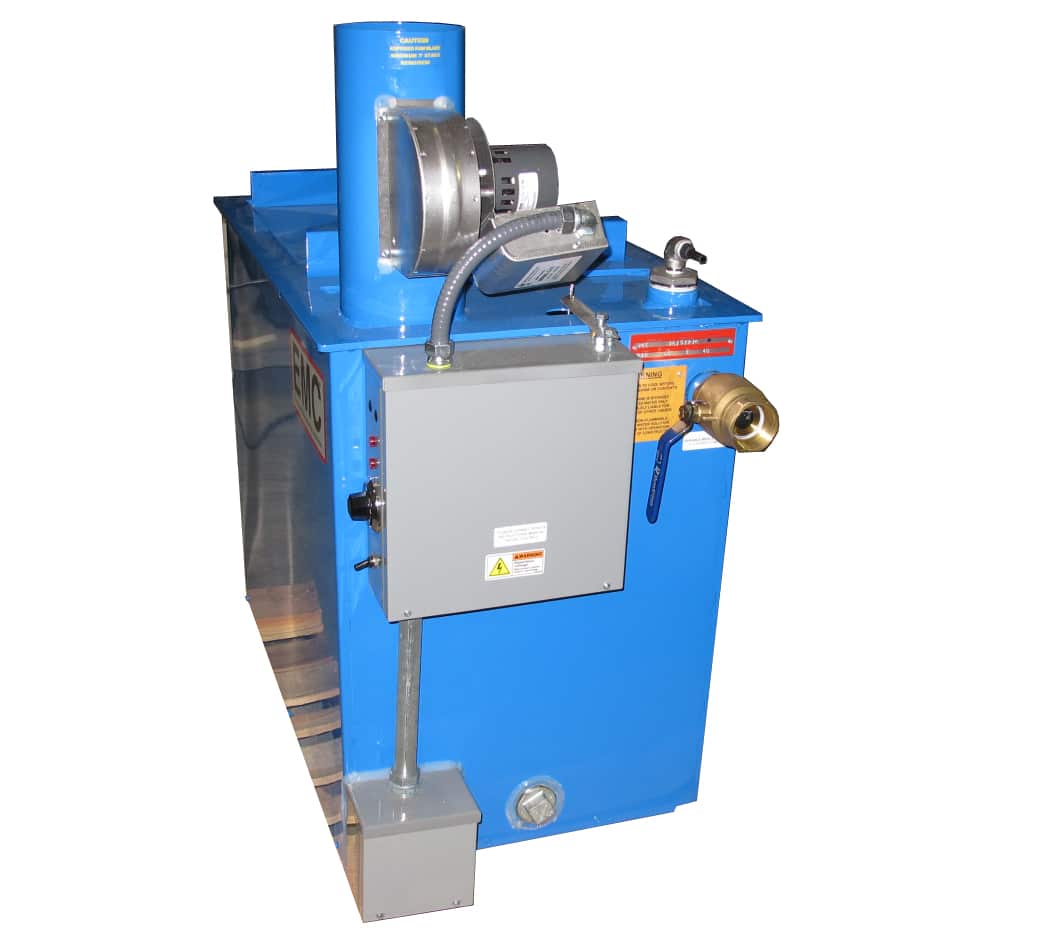Wastewater Evaporators for Disposing of Aqueous Waste Liquids
The most common industrial method for reducing the amount of waste generated by an aqueous ultrasonic cleaning system is with the use of wastewater evaporators. Since the vast majority of waste generated by an ultrasonic cleaning system is water, waste can typically be reduced by 90-95%. This will drastically reduce disposal costs by traditional means and in many cases, the remaining waste can be disposed of as solid waste which completely eliminates the need for liquid waste disposal. Typical non-flammable wastes than can be disposed of include:
- Machine Coolants
- Parts Washer
- Compressor Water
- Mop Waters
- Ink Washup
- Rinse Waters
- Tumbling & Vibratory Solutions
- Photographic Solutions
- Steam Cleaner Waters
- Pressure Washer
- Die Cast Solutions
- Paint Washup
- RO/UF Concentrates
- Phosphatizing Compounds
- Plating Solutions
- Hot Tank Solutions

When the cleaning and rinsing fluids in one of our ultrasonic cleaning systems require replacement, the waste liquids can be pumped directly into the holding tank of the evaporator. Therefore, the evaporator holding tank volume should be larger than the combined volume of liquid in all of the tanks in the cleaning system. Our Pump Drain System option should be added to the cleaning system purchased for the most convenient operation by using control panel switches to drain the tanks into the evaporator. The wastewater evaporator does not typically need to run continuously but rather only when waste requires disposal.
WEV Wastewater Evaporator Specifications
- 3 standard sizes to choose from.
- Large holding tanks to accommodate all of the waste from a complete Zenith clean/rinse/dry system.
- Requires connection to existing facility exhaust systems.
- Steel or stainless steel construction.
- Large sludge valve for each draining.
- Automatic shut-off switch turns system off when waste is evaporated.
- Multiple voltage options.

- WEV-85E: 85 gallon holding tank, electric-powered.
- WEV-125E: 125 gallon holding tank, electric powered.
- WEV-240G: 240 gallon holding tank, gas powered.
- Steel holding tanks, optional stainless steel upgrade.
- High-efficiency electric and gas heaters which allow for complete tank draining.
- Long flue with flow inducer.
- Large drain valves to allow the draining of very thick liquid waste.
- Removable cover included.
- Automatic shut-off switch.
- Small footprint.
- Large top access port for solids removal.
Evaporation Rates:
- WEV-85E: 4-6 gallons/hour
- WEV-120E: 10-14 gallons/hour
- WEV-240G: 18-26 gallons/hour
- Multiple voltage options: 240 volt 1 or 3 phase, and 480 volt 3-phase.
- Pump option to drain contents of holding tank into 55 gallon drums.
- Auto-fill Option to automatically fill the holding tank of the evaporator until source tank is empty.
- WEV-85E: 4-6 gallons/hour
- WEV-120E: 10-14 gallons/hour
- WEV-240G: 18-26 gallons/hour
NOTE: Add “-SS” to the end of the model number for stainless steel upgrade option.

